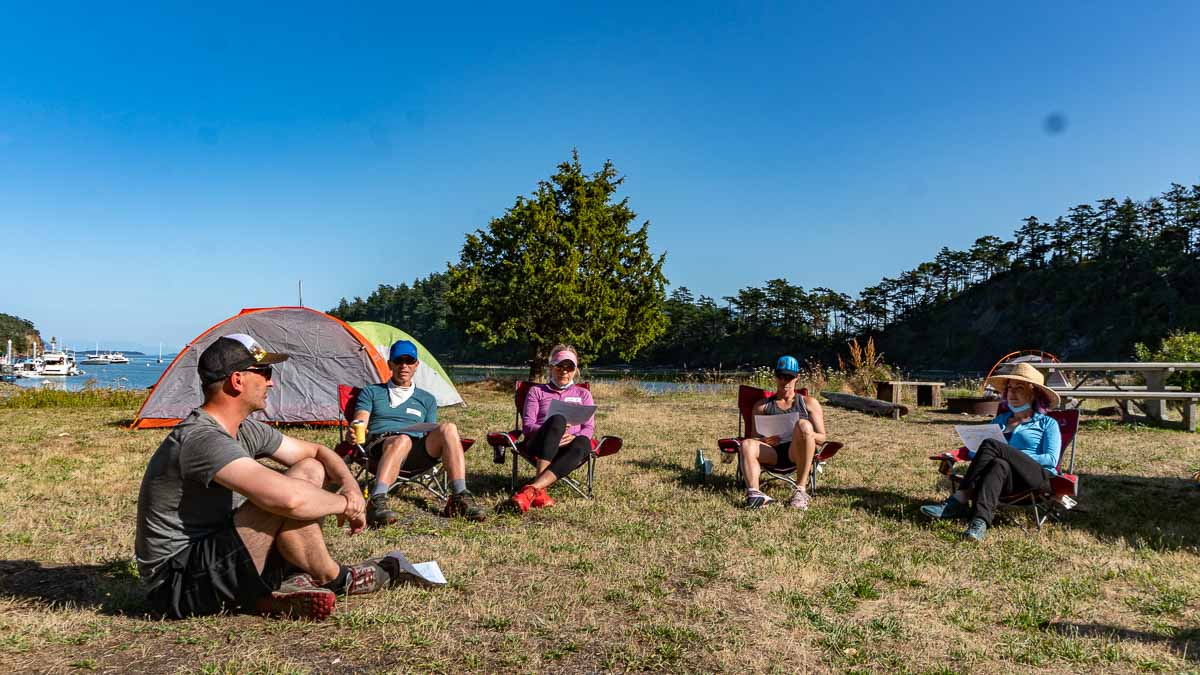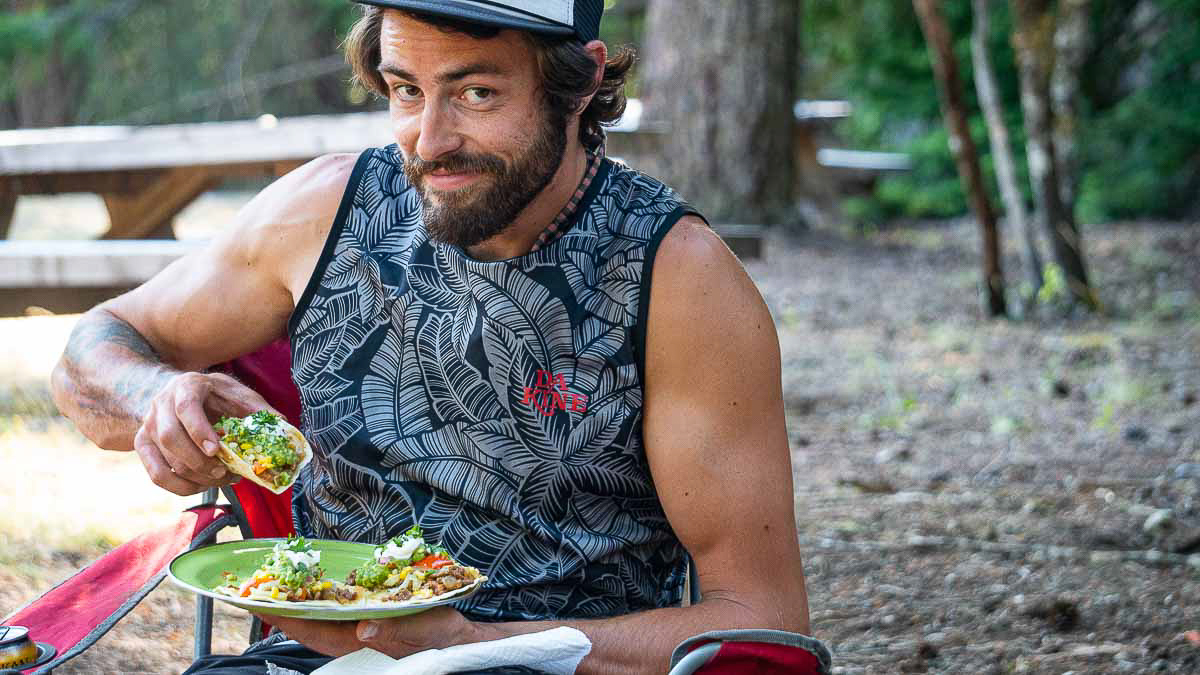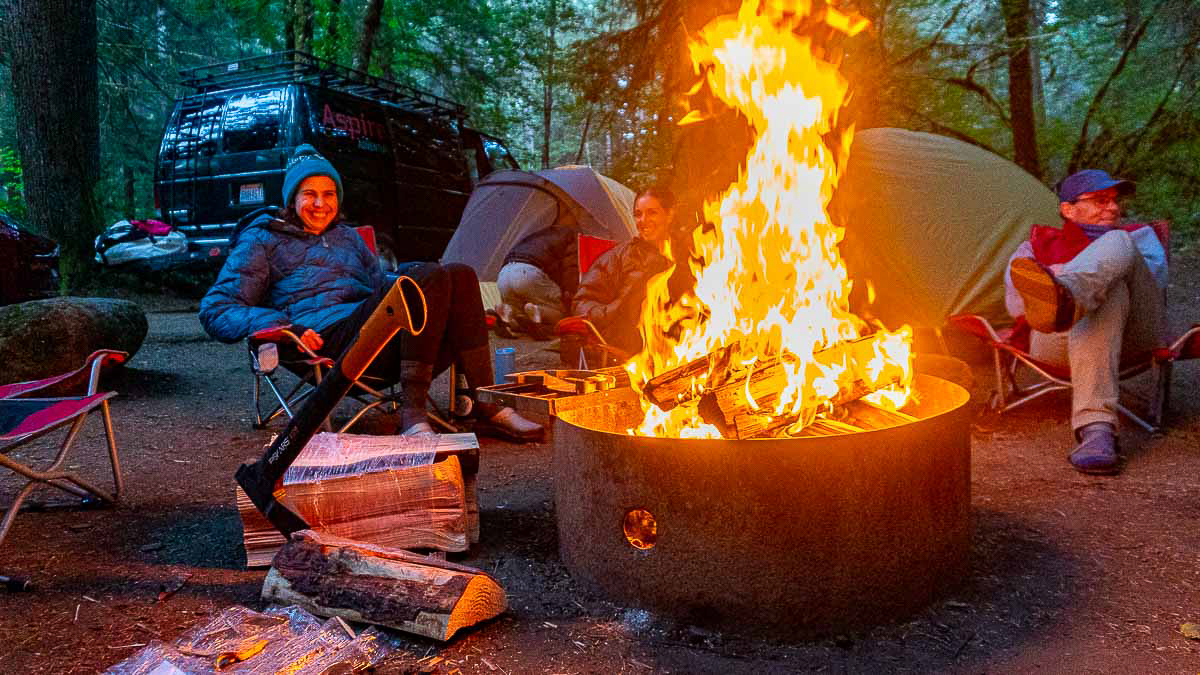
I’d like to start this final post with a little brain exercise. When I say ‘taper’ what comes to mind for you? Does the “Scream” emoji (or the actual painting) pop into your head, complete with echoing shriek? Or- do you think yessssss!!!!! Now I have an ironclad excuse to sit on the couch, Netflix, and eat ice cream. Every. Single. Day.
In my humble experience, there’s not a whole lot of middle ground where tapering is concerned. Either you love it or you despise it. You either can’t wait to reap the rewards of your hard training and basically just grow into the couch until the big day, or you develop a pacing habit and get irrationally angry at the littlest things because you’re not training.
I have witnessed many a stellar teammate and competitor deny themselves what could have been an equally stellar competition or event by not respecting the tapering period. Too often athletes, when feeling at peak fitness and peak recovery, will try to sneak in one last hard workout (often to validate that they are, in fact, ready for their upcoming goal) only to push themselves over the edge5,7.
It’s a really heartbreaking thing to witness, especially knowing months and years of training have gone into planning for a culminating event. Some people may repeatedly disregard tapering and adopt the view that mere hours of decreased training is good enough, but for most of us the physiology of recovery is undeniable. We need quality rest for quality outcomes7. There are smart ways to approach tapering that will allow you to seek the best possible outcome, regardless of whether you’re a racer or not. There’s also a plethora of things to consider when you’re trying to figure out how long you should taper for. The most obvious is the duration of your goal race or event, but consider also if you have other, less important (but still sizable) training goals throughout the season. Should you taper before each of those too? What about strength and speed workouts in the taper period? These are all topics we’ll tackle here to take some of the mystery out of tapering and hopefully quell some of your taper tantrums…if you’re inclined in that direction.

When you’re planning your running season, it’s great to have a couple of target events in mind, with one in particular being the goal event/race that you’ll plan to take your most serious taper for. Again, these do not need to be races, but can simply be epic trail runs you want to be in tip-top shape for. Regardless of whether it’s a race or a solo epic mountain outing, having a couple of different goals throughout the running season will break up the season into distinguishable training blocs and help organize your taper period(s).
We will get into what exactly the tapering training volume might look like later, but let’s just roll with the target events for now. Ideally you’d grade these events by priority, with ‘A’ being the topmost in importance, ‘B’ being secondary and so forth. Lots of runners will have an A, B, and C event lined up for their running season, and will train right through the C event (essentially allowing no extra or special rest) for this event4,5. This means that going into your C run you’ll have a clear idea of what your training goal is, and you’ll stick to it, not overextending or getting swept up in an ego battle. And if you’re racing, you’re probably not aiming to go out guns blazing for a podium finish. Essentially, the C event ends up being some form of race, epic, or supported trip (Aspire anyone?!!!) that probably has a defined distance, will ideally mimic some of the terrain and conditions of your ‘A’ event, and is worked seamlessly into your training plan. Meanwhile, a ‘B’ event is one that will demand some recovery pre and post event. For example, if your B event is a 100K run (with your ‘A’ event being a 100 miler 2 months later), you’ll need to plan a moderate taper pre-100K. Oftentimes within distances of 50 miles or less, one week of tapering is sufficient. 100K can be a tricky intermediate distance, and someone with years of solid base training may feel comfortable with a week of tapering, whereas someone brand new to the distance might want to be more cautious and look at a 8-10 day taper period. Keep in mind, taper does not actually mean total and complete sloth-like inactivity (despite what my intro might have alluded to). Lastly, the ‘A’ event is where you’ll have a prolonged and defined taper period lasting several weeks. This is where you’ll really need to try your best to stick to your tapering plan. For events like 100 milers you might expect a 2-3 week taper period depending on the athlete.
So, what does training volume actually look like for tapering? In a word: less1,2,3,7,8. In this article I will be focusing on folks looking to go long, meaning 50-100+ miles. Tapering for shorter distances like marathons, half marathons, and 10Ks is a whole different arena for which I can claim no special theoretical expertise. I do however, speak from experience, practice, and study when approaching tapering theory for the longer distances.

For those who’ve been following along over the past months you knew this was coming at some point… this is where the requisite science lesson makes an appearance! When we train, our bodies become fatigued; there’s continual tissue damage on a microscopic level in addition to constant physiologic and musculoskeletal adaptation. The ‘off’ days we take throughout training allow for periods of recovery to occur, for our bodies to assimilate the training load being placed on it, and for us to get fitter, stronger, and more adaptive to the stressors of trail running1,4,5,7. The tapering period capitalizes off of this progressive tear down and build up cycle and is sometimes referred to as the supercompensation period. This means that all those corny sayings like ‘the money’s in the bank!’ or ‘the hay is in the barn’ actually apply here4. You’ve done the work to earn the fitness, and now you need to be judicious about how you spend all that hard earned cash, a.k.a. endurance potential. The aim then is to hold on to as much of that peak fitness and strength you’ve achieved while also shedding some of the fatigue that always accompanies hard training.
Generally speaking, in a three week taper period you can plan for 50-70% of the volume of your biggest training week for your first taper week and decrease from there2,3,6,7 (More detail below). Additional things you’ll want to consider: drop the strength training down to 1-2 times per week then eliminate it all together for the last week. Any speed or hill workouts should be done with ample recovery allowed for within the workout, and ideally would comprise no more than one training day of each week. You’ll want to make rest and recovery a priority1,2,4,7,8. This is the time where, if you’re feeling unmotivated, lethargic, or just can’t fit in your planned run then don’t.
Resting at this stage rather than creating additional stress for yourself will pay big dividends. If you’re handling your taper period well you can maintain a reduced version of your preferred long run(s) to prevent losing an undue amount of the aerobic fitness you’ve gained. This may seem contradictory to what I’ve just said regarding focusing on recovery, but this bit applies to runners who have had an injury free training bloc, are feeling motivated, rested, and ready to go. If you fall into that category still remain cautious that you don’t overdo and leave yourself wanting on your goal day. Below are some possible scenarios that you might apply to your own training to taper for your ‘A’ event. These are guidelines for runners who are newer to the following distances might use, or for those who have less than 5 years of continuous base training.
50 mile -100K distance
Biggest training week volume = 90km (50 milers)/ 105 km (100K runners)
- Taper Week 1:
- Total Distance: Biggest Week x 70% = 63 km (50 m)/ 73 km (100k)
- Strength: 1-2 workouts, focus on functional strength, lower weight and higher reps
- Speed/Hills: 1-2 workouts, allow for equal recovery time between repeats
- Long Run: 50% max of average ‘medium week’ long run
- Taper Week 2
- Total Distance: Biggest Week x 40-45%= 40 km (50 m)/ 42 km (100k)
- Strength: 1 workout, decrease weight and repetitions
- Speed/Hills: 1 workout, allow for extra recovery time between repeats
- Long Run: 35% max of average ‘medium week’ long run
- Taper Week 3
- Total Distance: Biggest Week x 35%= 31 km (50 m)/ 36 km (100k)
- Strength: None
- Speed/Hills: 1 curtailed workout maximum, consider pick-ups instead of hills
- Long Run: Less a true long run and more an easy distance run
- Week 4 = Pre-Event/Run Week
- Sleep as much as possible
- Eat well and enough, but don’t be adventurous with your gut
- Re-check gear, travel plans, routes, forecasts
100m distance
Biggest training week volume = 130km
- Taper Week 1:
- Total Distance: Biggest Week x 40% = 52 km
- Strength: 1 workout, focus on functional strength, lower weight and higher reps
- Speed/Hills: 1-2 workouts, allow for equal recovery time between repeats
- Long Run: 40% max of average ‘medium week’ long run
- Taper Week 2
- Total Distance: Biggest Week x 35%= 45 km
- Strength: 1 workout, decrease weight and repetitions
- Speed/Hills: 1 workout, allow for extra recovery time between repeats
- Long Run: 30% max of average ‘medium week’ long run
- Taper Week 3
- Total Distance: Biggest Week x 20%= 32 km
- Strength: None
- Speed/Hills: No specific speed or hills, only pick-ups early in the week
- Long Run: Easy Distance
- Week 4 = Pre-Event/Run Week
- Sleep as much as possible
- Eat well- and make sure to eat extra in the week leading up to your big endeavour, but don’t be adventurous with your gut
- Re-check gear, travel plans, routes, forecasts
With the rough guidelines above you should be able to get an idea of which direction to take your taper in, as well as how to plan smaller recovery sessions throughout the season. Bear in mind that everyone recovers differently, and that tapering is an absolutely individually honed process. For example, years ago before my first 100 miler I was dutifully following my tapering plan through week one, but then a heat wave hit and I felt absolutely wiped out. With a little over two weeks to go before the big day I had a hard time motivating to get up at 3 am to run when the temperature was bearable. So, I mostly just didn’t run at all for the weeks leading up to the race. Instead I went to work, came home to sit in an ice bath, ate A LOT, and slept even more. I would be lying if I said that, even knowing it was the right thing to do, all that inactivity didn’t make me pretty anxious. I felt like my fitness was plummeting and my motivation right along with it. But by the time I showed up at the start line and (many hours later) somehow managed to win the women’s race, I was pretty grateful I had taken it easy leading up to the event. I knew that the excessive heat leading up to the event would take a toll, as did the record-breaking heat on race day. It’s also worth keeping in mind that regardless of whether or not you’re racing, heading into your run a little on the downside of peak fitness is infinitely better than being overfatigued or overtrained. Adrenaline and the bliss that comes from being on the trail will pick up the difference.
These are all things you can ruminate on when you create your perfect taper cocktail. Consider what your end objective is, think about how you might best get there, and plan for those daemons on your shoulder along the way. And remember that above all, we are all absolutely privileged to be running in such wild and beautiful places- so don’t forget to enjoy the journey along the way.

References:
- Bosquet, L., Montpetit, J., Arvisais, D., & Mujika, I. (2007). Effects of tapering on performance: a meta-analysis. Medicine & Science in Sports & Exercise, 39(8), 1358-1365.
- Henderson, Z. J. (2016). Peaking and tapering in endurance athletes: a review. The Post, 1(1).
- Houmard, J. A. (1991). Impact of reduced training on performance in endurance athletes. Sports Medicine, 12(6), 380-393.
- House, Steve, and Scott Johnston. Training for the New Alpinism. Patagonia Books, Ventura, California, 2014.
- House, Steve, Scott Johnston, and Kilian Jornet. Training for the Uphill Athlete. Patagonia Books, Ventura, California, 2019.
- Mujika, I., & Padilla, S. (2003). Scientific bases for precompetition tapering strategies. Medicine and science in sports and exercise, 35(7), 1182-1187.
- Murach, K. A., & Bagley, J. R. (2015). Less is more: the physiological basis for tapering in endurance, strength, and power athletes. Sports, 3(3), 209-218.
- Pyne, D. B., Mujika, I., & Reilly, T. (2009). Peaking for optimal performance: Research limitations and future directions. Journal of sports sciences, 27(3), 195-202.
